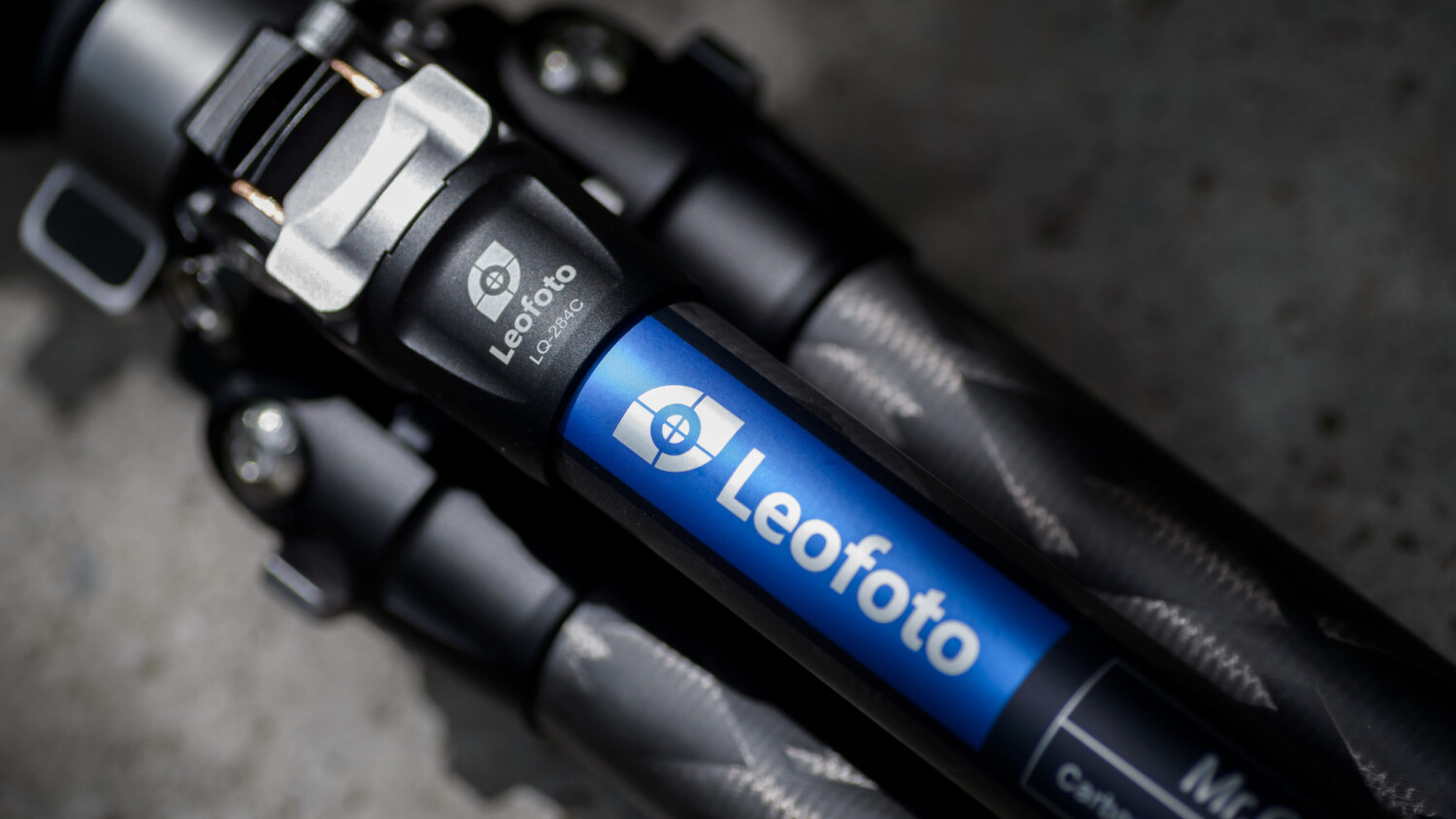A medium-sized tripod that we can always take with us: review of Leofoto LQ-284C
Not everyone who takes photos needs to have a tripod. However, in architectural photography, a camera practically doesn’t exist without a tripod. Moreover, it is worth having more than one tripod! Many people believe that the optimal solution is to have three models…
- A large, versatile “workhorse” tripod (such as the previously mentioned Leofoto LM-324CL or the competing Gitzo GT3543XLS)
- A medium-sized tripod that we can always take with us, for example, in carry-on luggage or attach to a backpack when going hiking (Albrecht Voss described the Gitzo GK2545T-82QD model)
- A pocket-sized tabletop tripod that can be useful in specific situations (check out Mike Kelley’s review of the Platypod or the Gitzo Mini Traveler Tabletop Tripod).
This time, I will focus on a model that is suitable as the second of the three options, the Leofoto MR Q LQ-284C. It is a lightweight, high-quality tripod sold as a set with a center column and a ball head.
The stability of a tripod determines both the technical quality of photos and the comfort of work. I have the impression that the second aspect is often overlooked. Photographers focus on choosing the optimal camera and lens, sometimes blindly following technological innovations. They pay less attention to selecting a tripod and head, often trying to save money on their purchase. An outdated, heavy, and unstable tripod can be a nuisance and a significant hindrance during photography, directly affecting our workflow. In my opinion, it is worth carefully considering the purchase of a tripod and not skimping on it because it is an investment for years to come. The cost of even the most expensive tripod is usually several times lower than the cost of professional equipment that will be mounted on it later.
First Impressions
I was delighted as I unpacked the box containing the LQ-284C+LH-36. Emotions may not be an objective advisor when evaluating a product, but they should not be ignored! Leofoto pays attention to details, and the tripod is simply beautiful, well-packaged, and equipped with useful additional accessories. From the very beginning, we can feel that we are dealing with a well-thought-out, high-quality product.
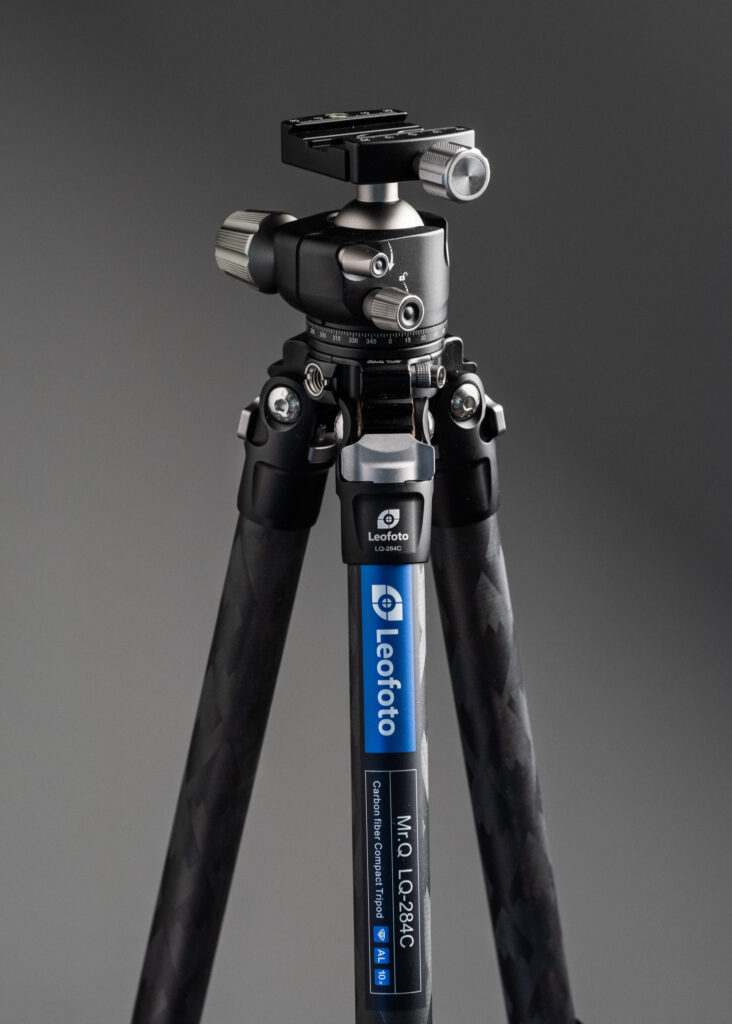
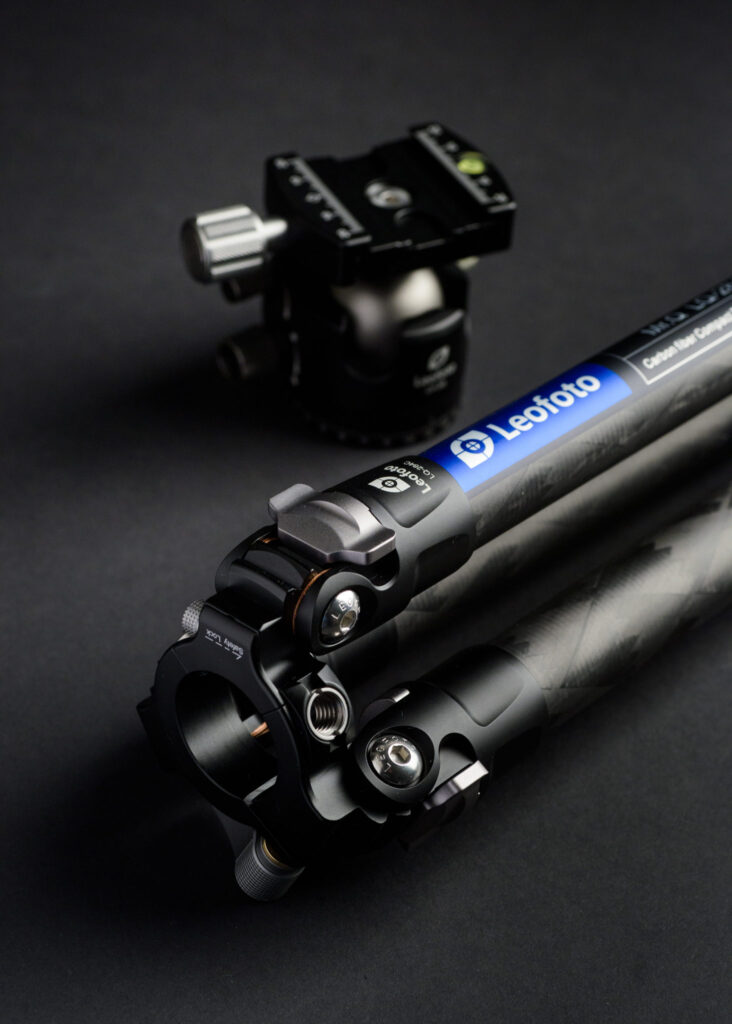
Technical data
The Leofoto LQ-284C is a 4-section tripod from MrQ series, sold as a set with the LH-36 ball head. The manufacturer brags that the legs are made of 10-layer cross-woven carbon fiber. The diameter of the thickest section is 28mm (the first 2 digits in the model name indicate the leg diameter, and the third digit represents the number of sections). The stiffness-to-weight ratio is indeed very good. The tripod weighs only 1.22 kg without the head and 1.62 kg with the included LH-36. The manufacturer declares a maximum load capacity of 10 kg. The maximum height of the tripod without the center column is 1200 mm without the head and 1290 mm with the LH-36, and when the center column is mounted, it increases to 1580 mm (with the LH-36). Thanks to the three adjustable leg angles (23, 55, 85°), the tripod can be spread practically flat to a minimum height of 160 mm (including the head). When folded for transport, the LQ-284C + LH-36 set has a length of 540 mm, and the legs themselves measure only 460 mm. It’s worth noting that the tripod, when the head is removed, easily fits in a typical carry-on suitcase allowed by airlines.
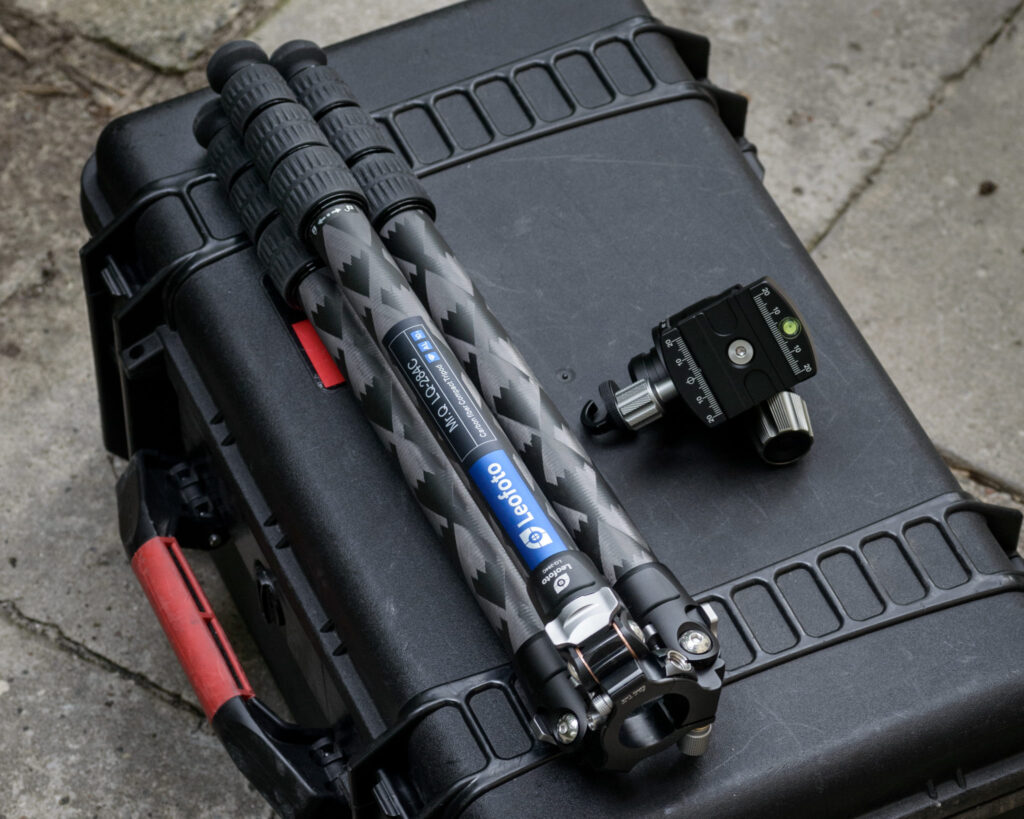
The upper part of the tripod is made of high-quality CNC-machined and anodized aluminum. The installation of the center column or base plate is done with a single button and a twist lock. The diameter of the base plate for mounting the head is 50 mm, perfectly matching the included LH-36 head.
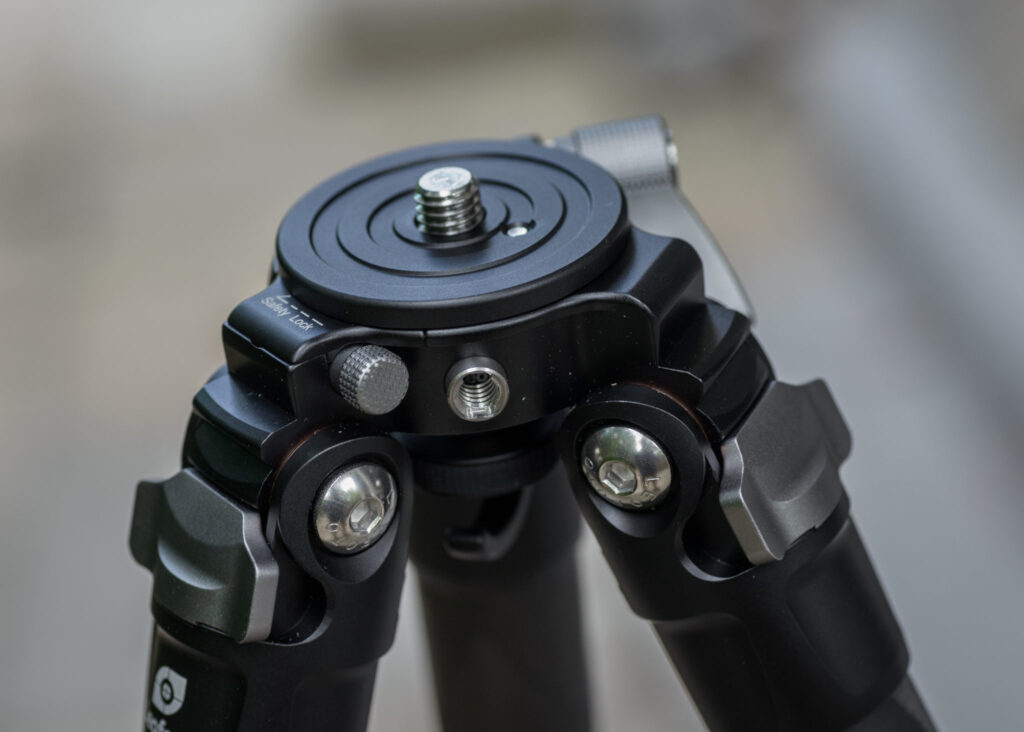
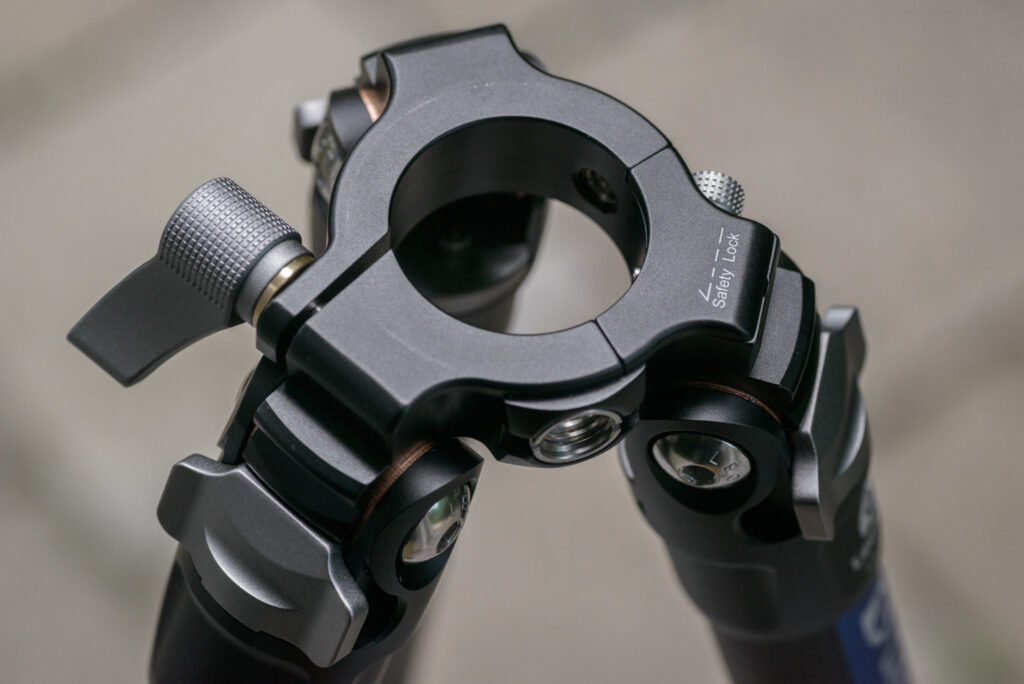
The described model is too short for my needs and has a narrow leg spread so it can’t be my main tripod for activities such as all-day interior sessions or exhibition documentation. However, its dimensions and weight seem perfect for travel or challenging conditions (e.g., in the mountains) where minimal weight matters. Also worth considering are two more expensive and larger models from the MrQ series, namely the LQ-324C sold with the LH-40 head and the LQ-365C with the LH-47 head. The latter, reaching a height of almost 2 meters, could be a good choice as the main tripod.
Accessories
The accessories included in the set are quite impressive. Firstly, we receive a cover, and it’s not a “cloth bag” as often seen with competitors, but a fully-fledged, waterproof case with an attached shoulder strap. They even thought of including a separate compartment to safely pack the center column. While it may be a minor detail for some, it’s worth mentioning because purchasing such a cover separately can cost a lot of money. Additionally, the set includes screw-in metal spikes for stability and a set of adjustment keys cleverly designed as a keychain with a bottle opener. Of course, the center column is also included with the tripod.
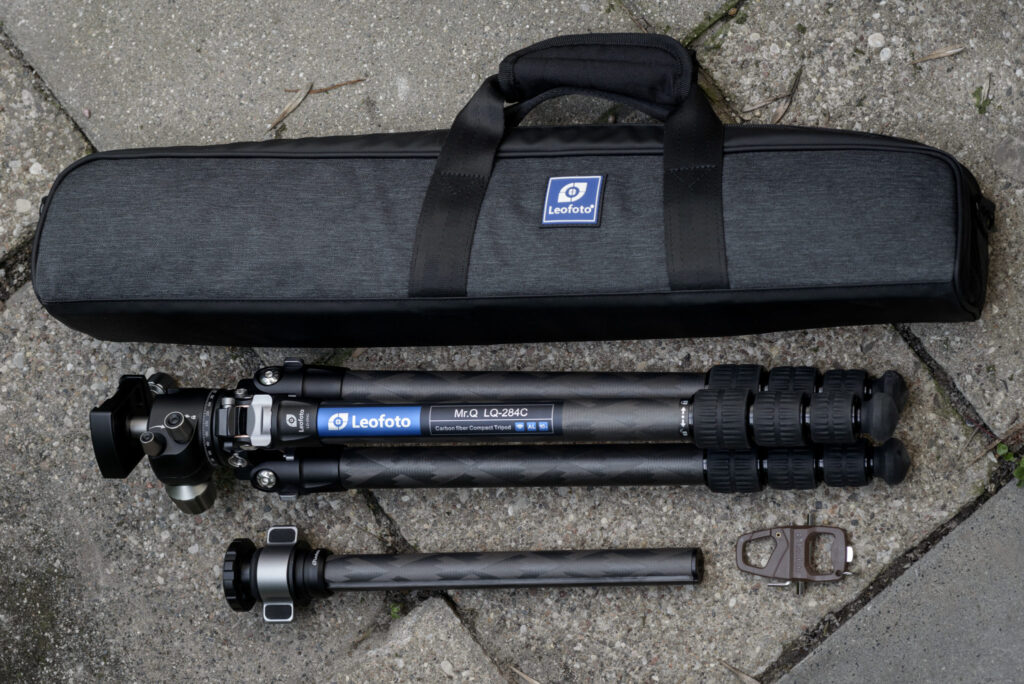
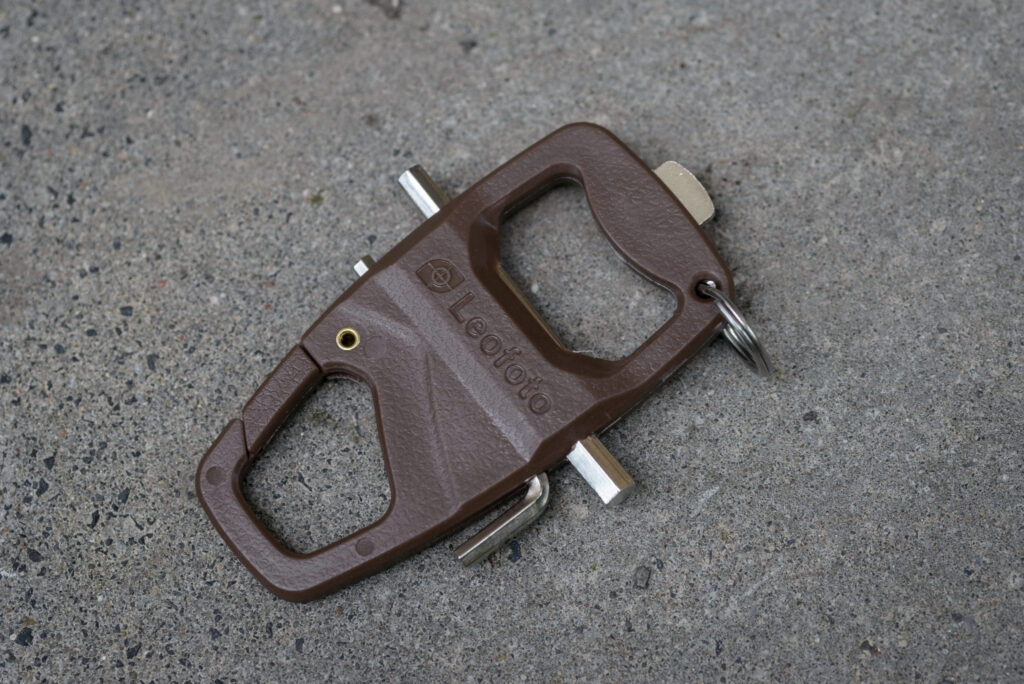
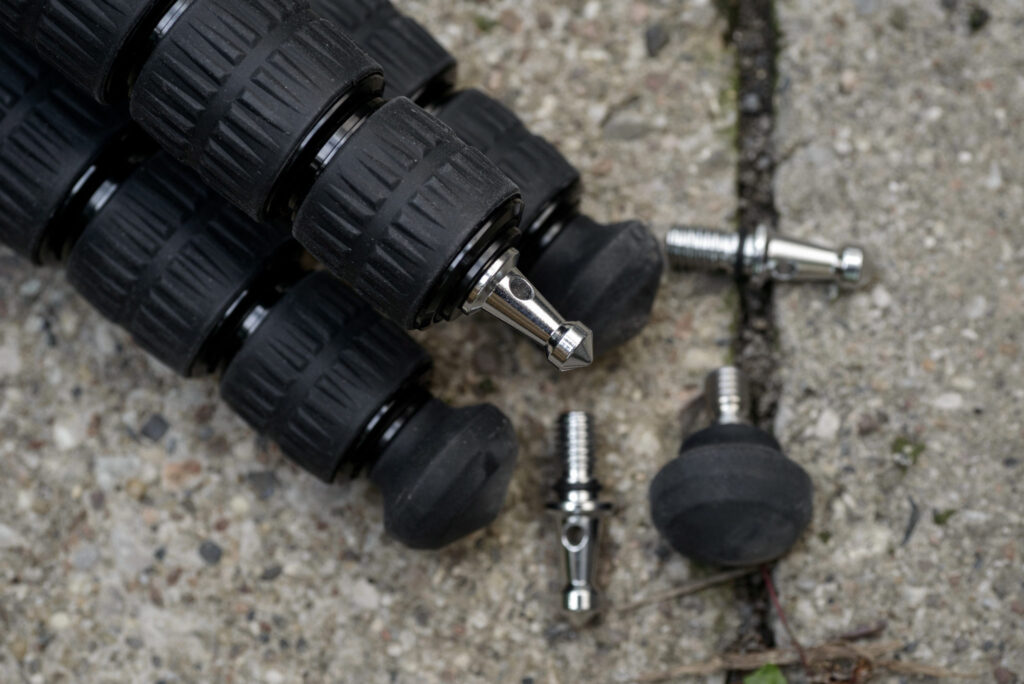
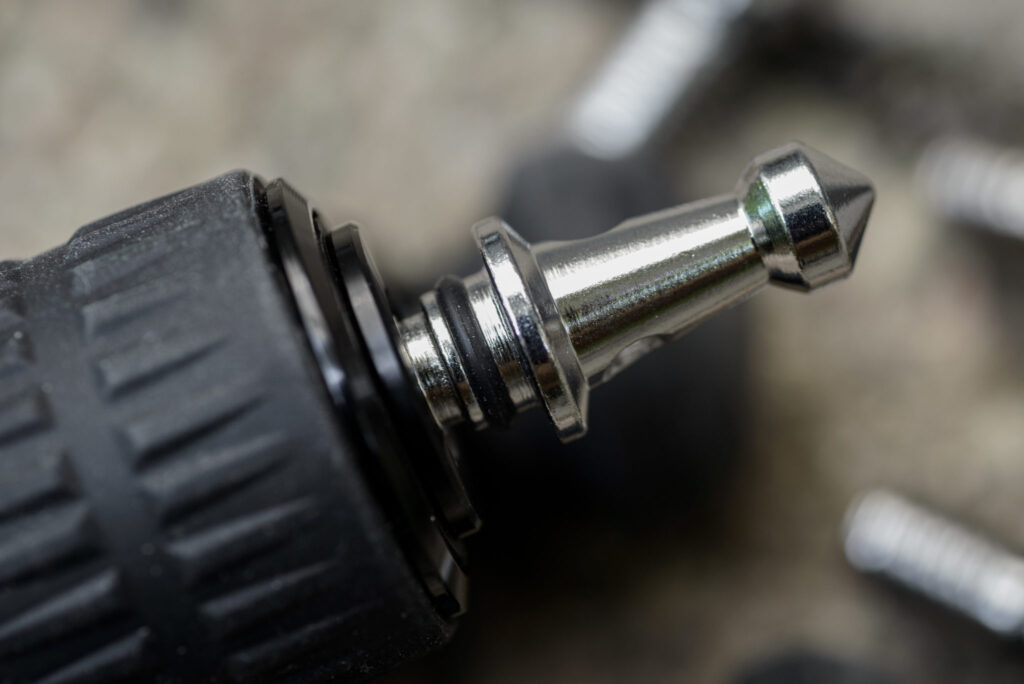
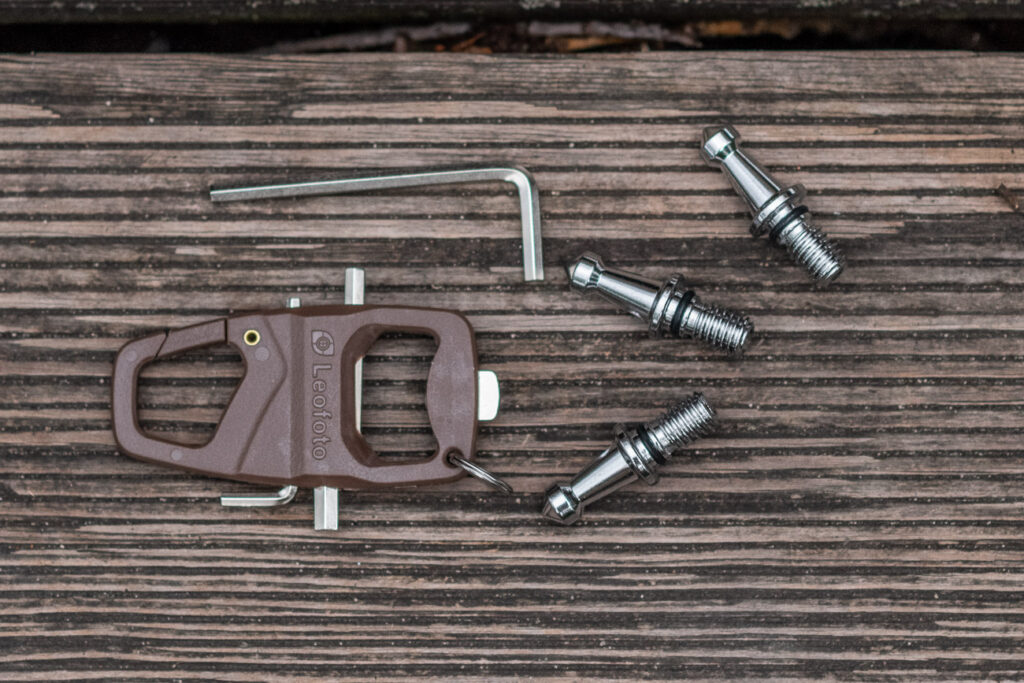
Handling and details
One of the most interesting features of the MrQ series tripods is the design and execution of the mechanism for exchanging the base plate with the center column. The clamp that locks the plate is adjusted with a convenient knob. An additional safety measure is a button that needs to be held down to remove the plate. The exchange process is quick and secure. It’s worth noting that both the base plate and the plate at the end of the column are made of metal and have counter screws to prevent the plate and the head from rotating (2 screws for plate rotation lock and 1 screw for head rotation lock).
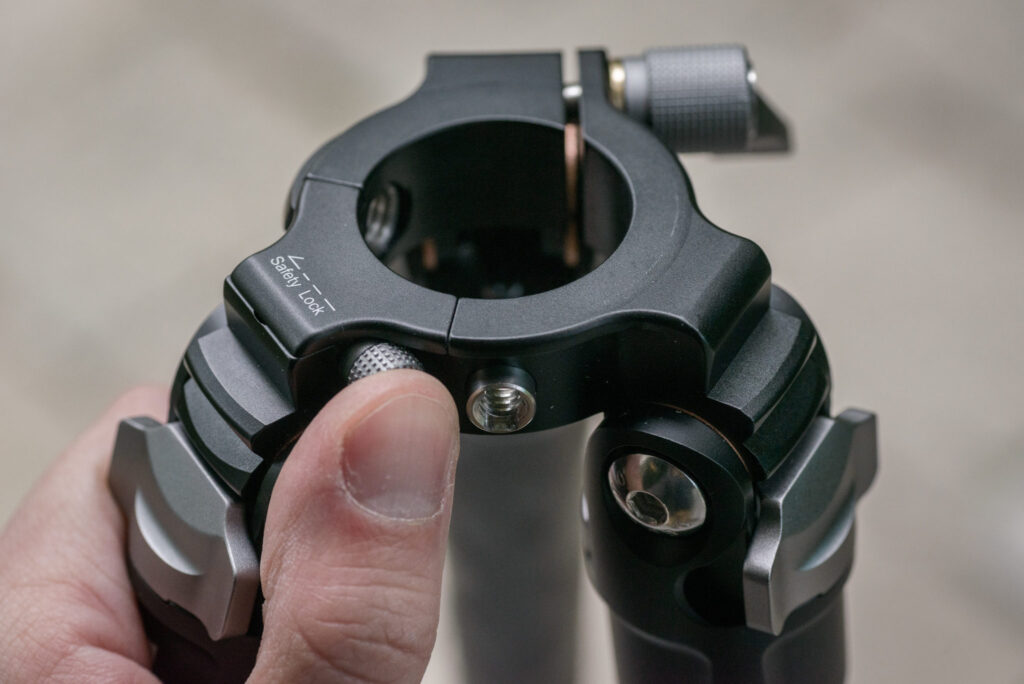
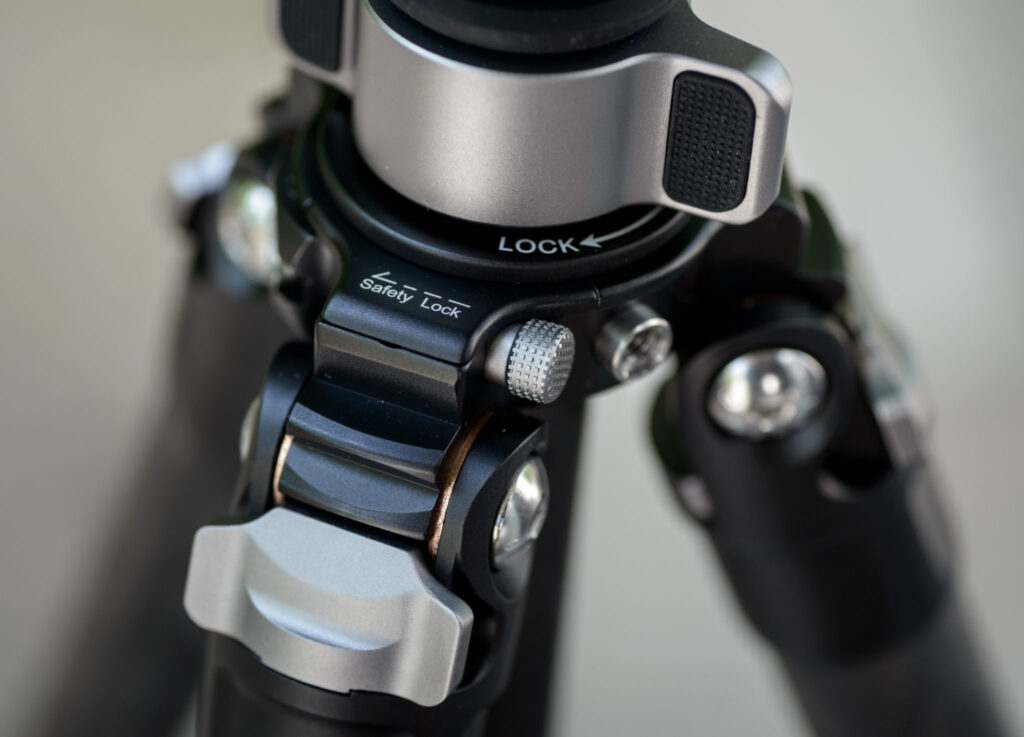
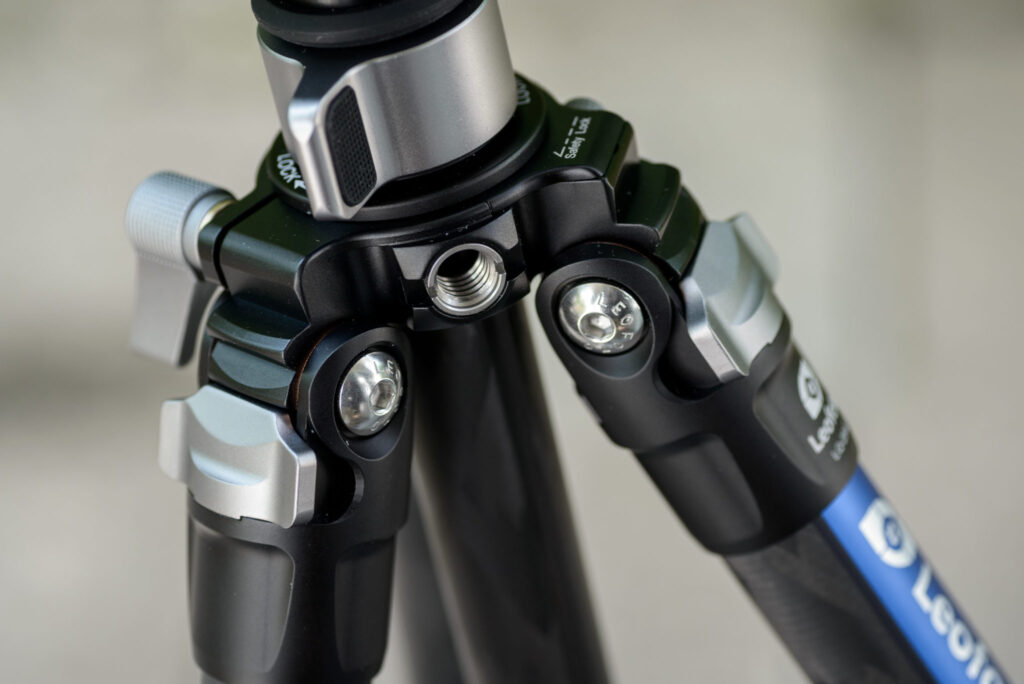
The manufacturer brags that the MrQ series models are “one tripod, dual forms,” and indeed, the ease of mounting and dismounting the center column makes the described tripod highly versatile. We can enjoy the advantages of not using the column: the tripod folds into a narrower size, it is lighter, the head and center of gravity are lower, providing greater stability, and the overall structure is stiffer. We can lower the tripod to its maximum height using the widest leg spread angle (without having to reverse the column with the head, as is the case with other tripods). However, if a height of about 130 cm is insufficient for our needs, we can quickly and conveniently add the center column.
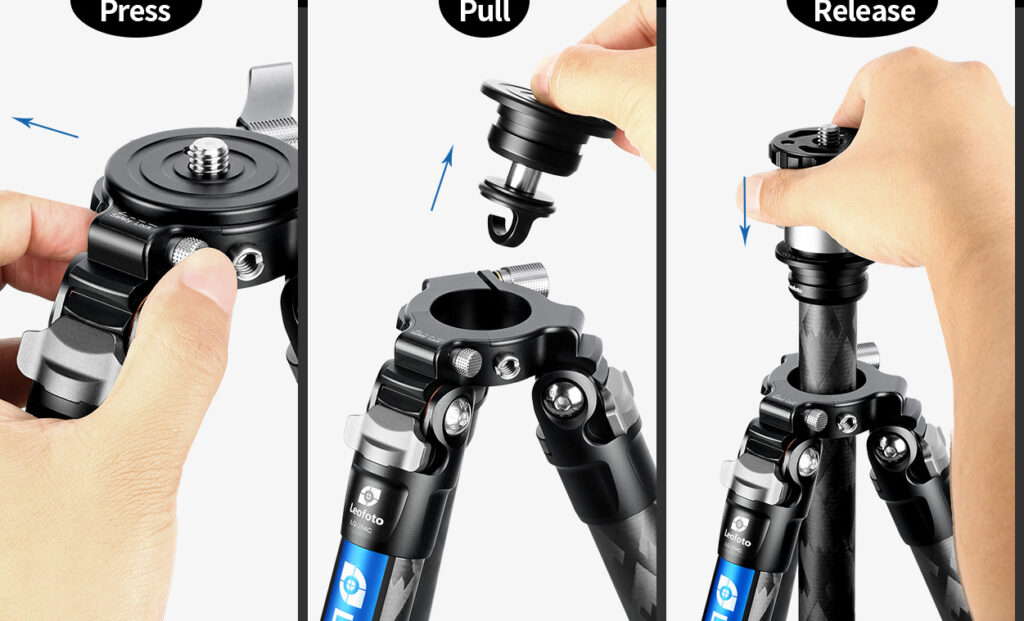
On the side walls of the spider, right next to the base plate, there are 1/4-inch and 3/8-inch threads where additional accessories can be attached. I really like this solution, especially considering that it’s available in such a compact model. We can easily attach accessories like a magic arm in a safer and more secure way than gripping it with the tripod leg. It’s worth exploring the various accessories dedicated to these mountings produced by Leofoto. This solution will be useful for attaching light sources, microphones, tablets, preview screens, or even an umbrella. Personally, I would use a holder for a lens shade to block direct light and reduce unwanted flares.
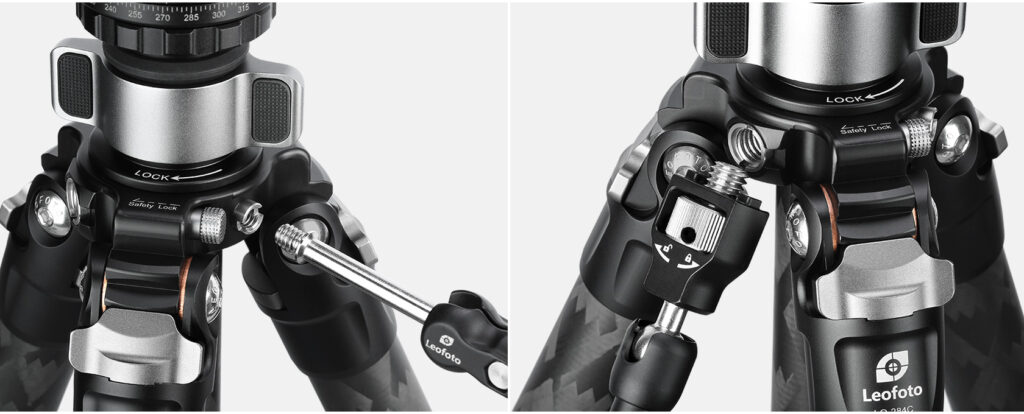
As I mentioned, the leg spread angle of the tripod can be set in three positions: 23, 55, and 85 degrees. This allows for complete leg spreading to a minimum height of 160 mm (with LH-36), as well as convenient leveling of the tripod on stairs or uneven terrain. The leg angle locking mechanism is very convenient. It can be easily operated even while wearing gloves, thanks to the wide metal handles that protrude on the sides and snap into place when folding the tripod.
To extend the next leg section, you simply need to twist the rotary lock with a quarter turn. The system operates with a noticeable click, making tripod setup quick and intuitive.
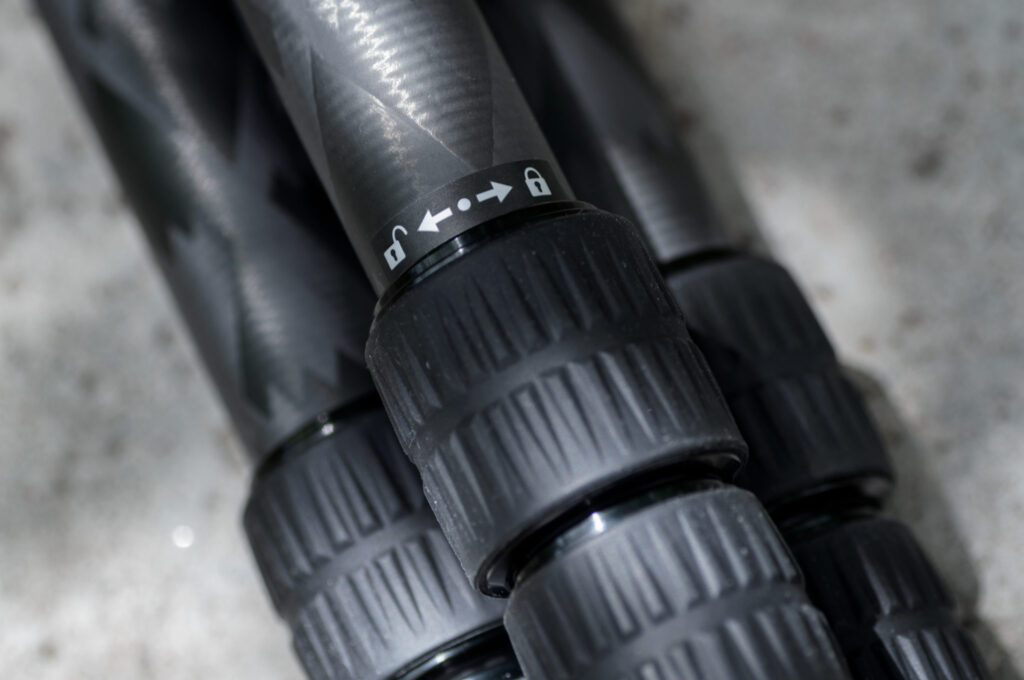
By completely unscrewing the lock, we can easily extend the entire leg section, which can be useful for cleaning and maintaining the tripod.
The legs are equipped with mushroom-shaped rubber feet. These can be replaced with the included metal spikes. It’s worth noting an important detail: there is a rubber seal placed on the thread to protect the interior of the tripod from water and dust.
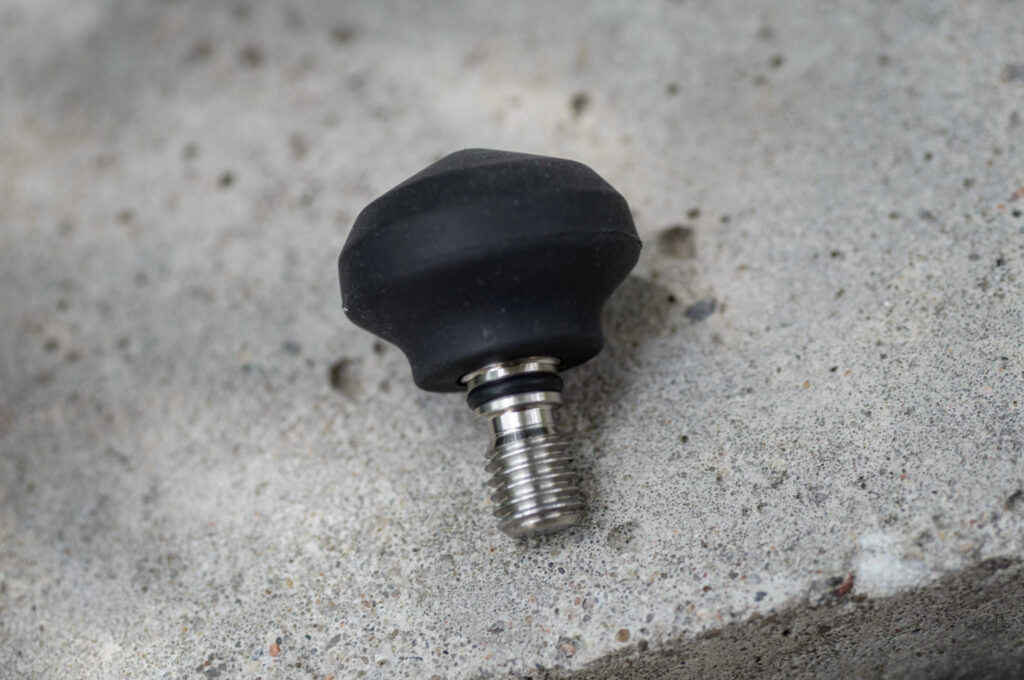


The LQ-284C is equipped with a hook that can be mounted either under the base plate or at the end of the center column. By using the hook, we can hang a bag or camera backpack, which provides additional stability to the tripod while keeping lenses and accessories within reach. When using the center column, the plate with the hook also acts as a lock to prevent accidental extension of the column to an excessive height. Therefore, it’s important to remember to secure it when switching from the base plate to the column. However, I have some reservations about the size of the hook itself. It could be longer, which would make it easier to hang a bag with a thick strap.
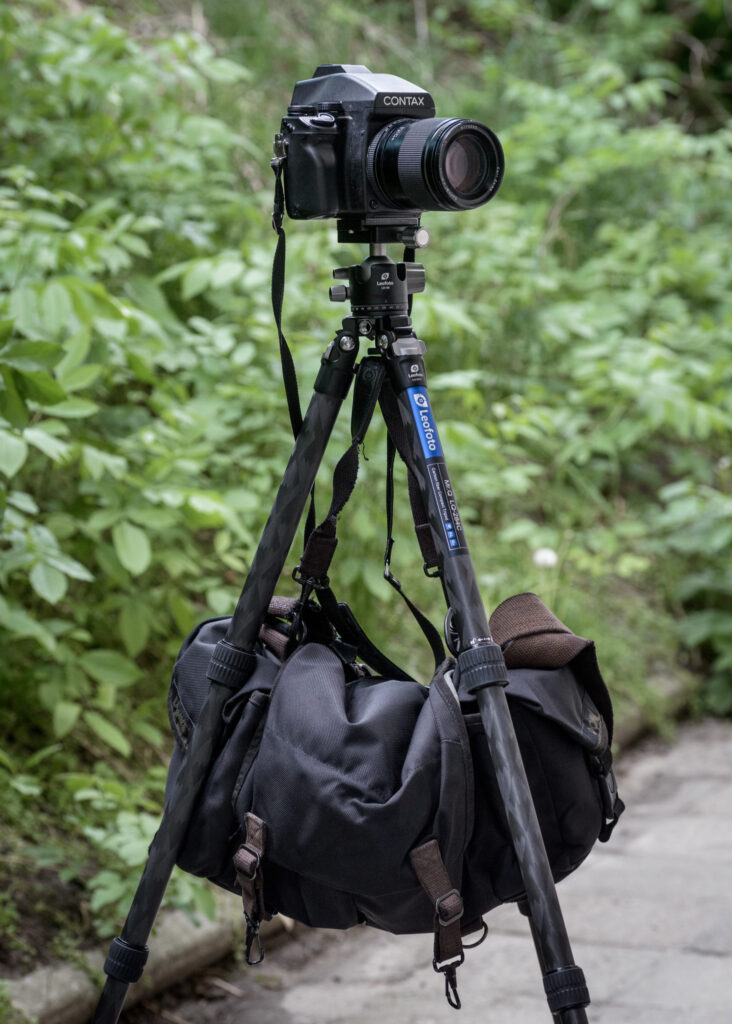
LH-36 Head
The LH-36 ball head by Leofoto is a low-profile (84 mm height, denoted as “LH”) aluminum ball head weighing 0.4 kg. It has a hollow ball with a diameter of 36 mm, as indicated in the name, and a base diameter of 52 mm. It can handle a maximum load of 18 kg. The manufacturer claims a ball shape tolerance of 0.01 mm and the use of a Delrin coating to ensure smooth operation throughout the range of movement. Manipulating the ball head is indeed predictable across the entire range but comes with a noticeable friction sensation. Even when fully loosening the ball locking knob, there is a quiet sliding sound. This is more of an aesthetic experience than a functional issue, but it’s worth noting. When comparing the smoothness of operation with very similar Really Right Stuff ball heads, it should be noted that the products from the American manufacturer operate without this rough sensation. This is likely due to the use of a different coating between the ball and the head.
The ball head is equipped with three knobs located at the bottom, which serve to lock the base rotation (panning), lock the ball movement, and adjust the resistance. At the top, there is a screw for locking the camera plate. The sizeable main locking knob provides a secure grip, and it is comfortable to use even with gloves. The use of different shapes and textures on the knobs reduces the risk of confusion and makes operating the ball head intuitive. The compact size of the ball head results in the two smaller knobs being placed close to each other. Even with my small hands and without gloves, I sometimes accidentally bumped into the second knob.
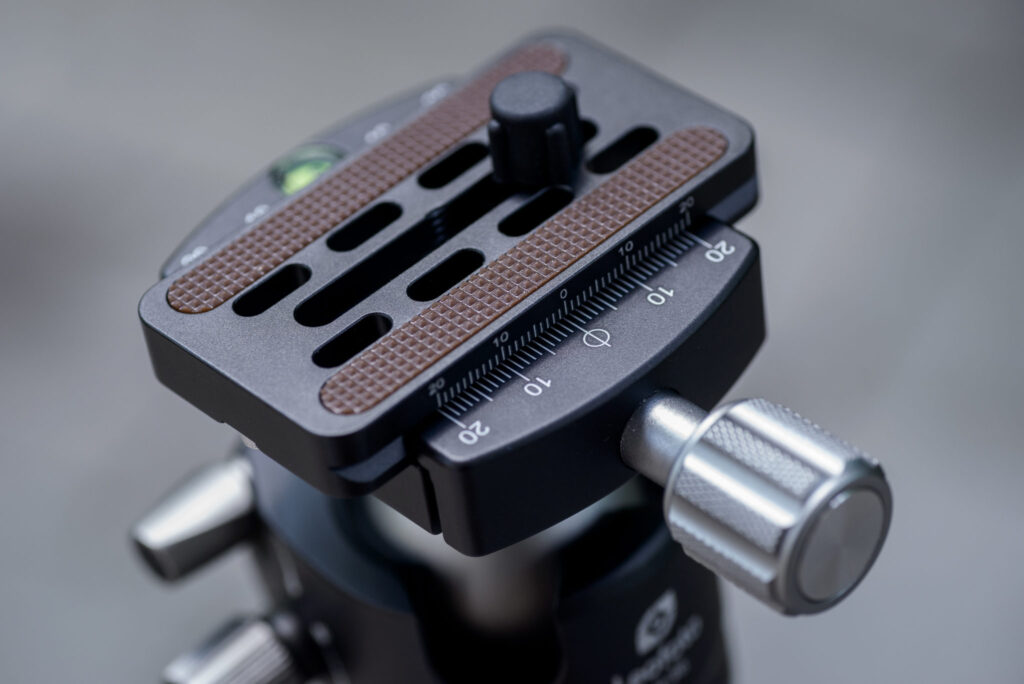
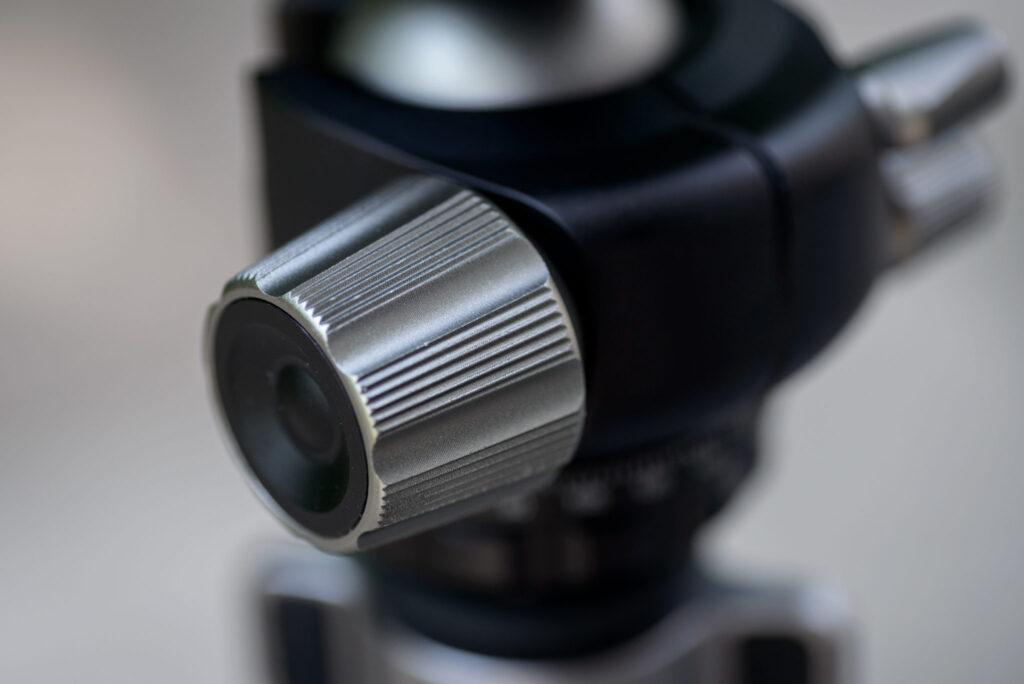
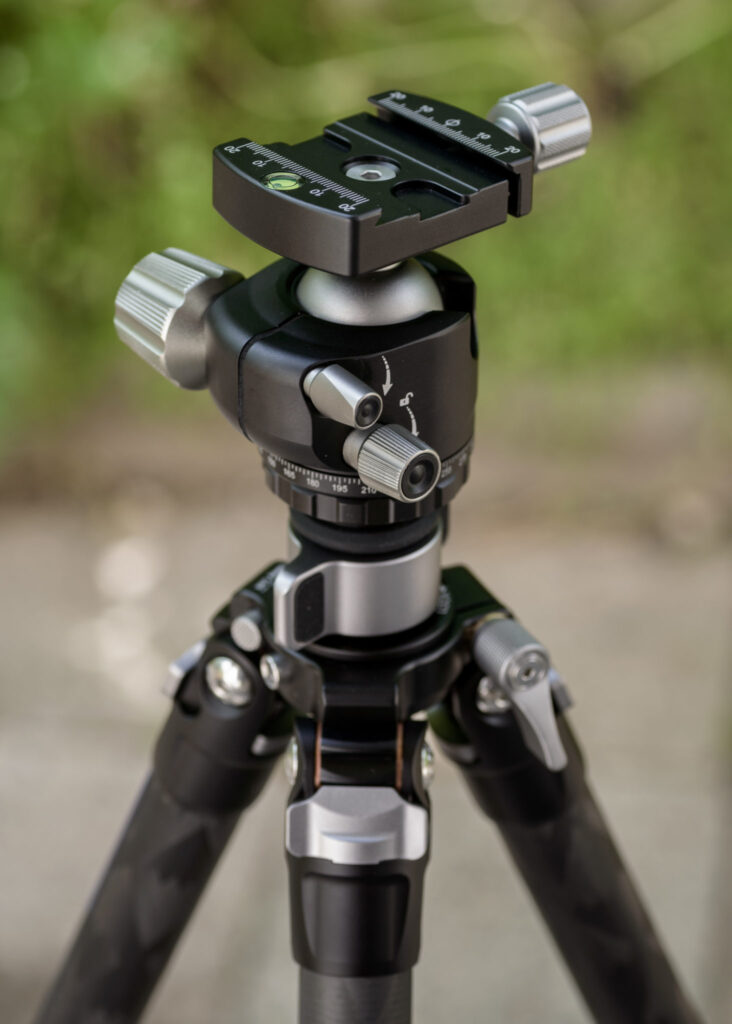
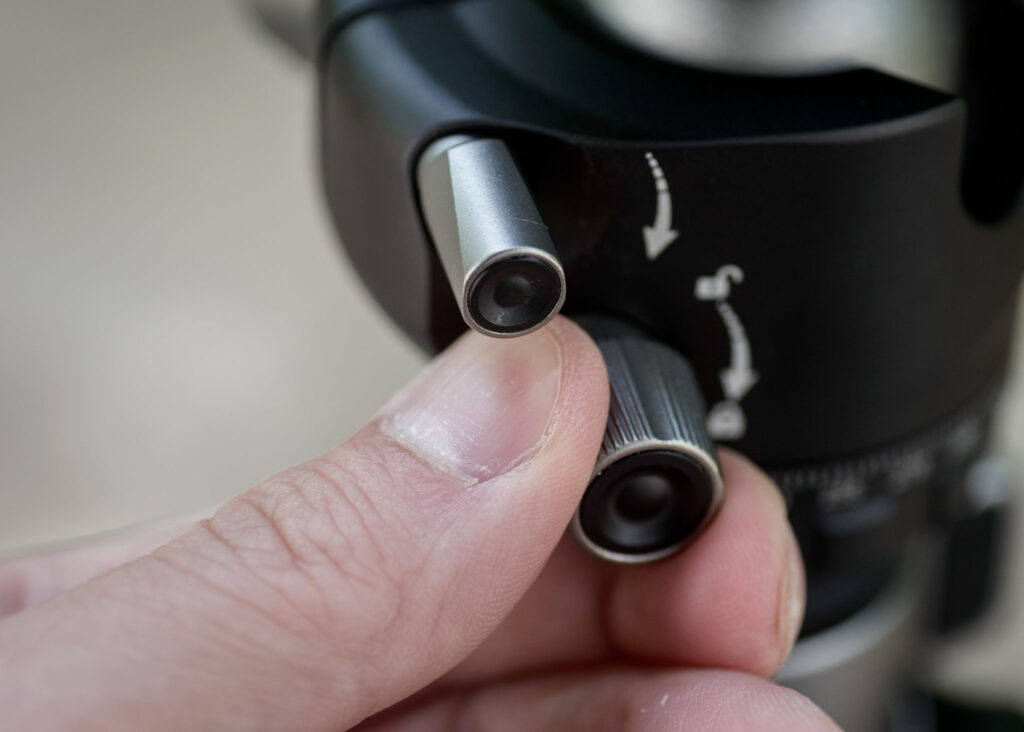
All the knobs have seals that protect the interior of the head from dust and moisture. The engraved scale on the bottom part of the LH-36 will be useful for panoramic photography. You can also find a scale on the top, in the plate holder. There is a small bubble level next to it, but it can only be used without a mounted camera. The LH-36 is, of course, compatible with the Arca Swiss quick-release system. The manufacturer includes a universal QP-70N plate with a length of 70mm, but in my opinion, it’s worth investing in a properly fitted L-bracket.
The head is compact and well-sized for the tripod. It operates precisely and is worth its price, but it didn’t impress me as much as the tripod itself, which is why I regret that the LQ-284C is only available as a set with the LH-36 head. I’m surprised that there’s no option to purchase just the legs and choose an optimal head separately or use one that you already own. I believe that the LQ-284C, combined with the Leofoto G2 head, would make an excellent set for interior and architectural photography. The LH-36 is certainly a versatile tool that will perform well in various photography fields. However, a significant drawback for me is the lack of rotation (panoramic function) on the top. This means we don’t have the ability to pan a leveled camera. If the manufacturer offered the choice, we could opt for a different version of the LH-36, such as the LH-36R+NP-50 variant, which has rotation on the top. Not everyone may be a fan of the screw-knob locking mechanism used in the described head; if we had the choice, it would be worth considering a lever-release solution. In conclusion, I would prefer to be able to choose a head independently in the most convenient configuration for me.
Summary
I believe the described model is an optimal choice for someone seeking a compact, durable tripod with a good balance of weight and size-to-stiffness ratio. The LQ-284C without the central column is very stable and allows for confident photography even with heavy cameras. The easily attachable central column can be helpful in situations where raising the camera is necessary.
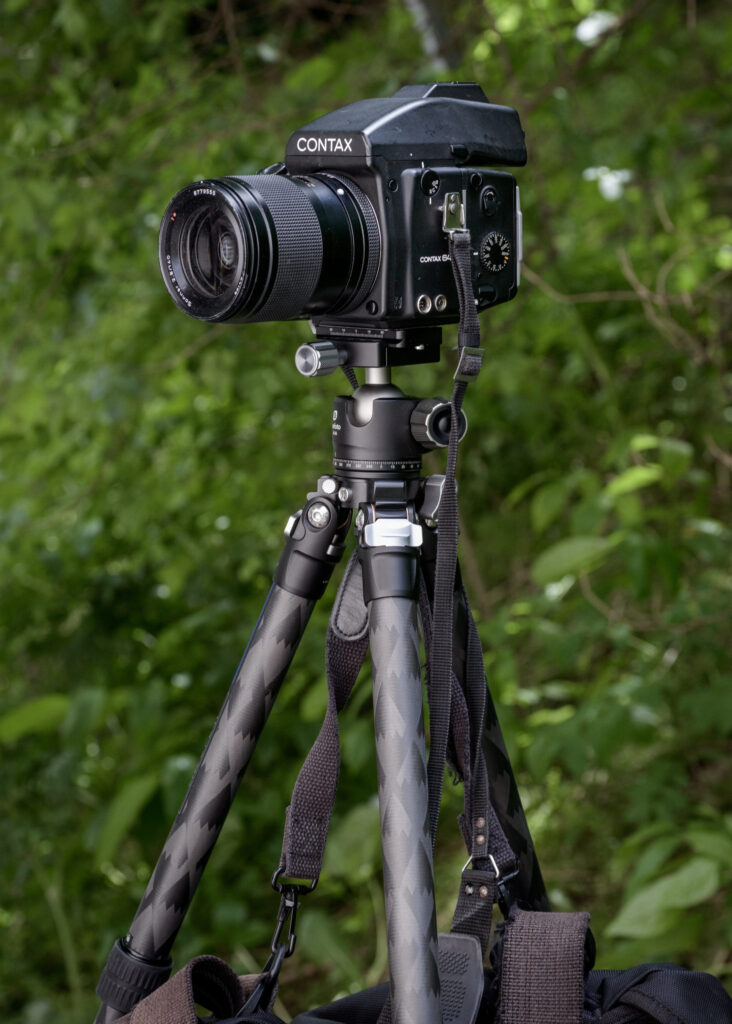
I use two types of tripod heads depending on the type of photography. For portrait sessions, I predominantly use a ball head, which allows for quick and intuitive work. For precision-demanding assignments, I opt for a geared head tripod, which enables precise micrometric movements. That’s why I liked the solution employed in Leofoto tripods, which allows for quick configuration changes. However, I’m not satisfied with the fact that it’s not possible to purchase MrQ series tripods without a head.
The central column in the described model is quite short. It’s important to remember that it’s a compact model, and due to its small diameter, a thick and long column won’t fit. I have some reservations about the stability of the column itself. Unfortunately, during height adjustments when unlocking the column, there is minimal play that can affect the framed composition. It’s a trade-off. Let’s remember that the designers aimed to maintain the smallest dimensions when the tripod is folded.
After several months of use, the Leofoto MR Q LQ-284C+LH-36 makes a very good impression. In my opinion, it is a highly recommendable piece of equipment. I expect a tripod of this class to perform the same way as it did when purchased even after several years of use. The precision in its construction and the materials used give hope for that. If you liked this model but are looking for a much more versatile tripod that can serve as the primary tripod for architectural photographers, it’s worth considering the LQ-365C+LH-47, which is the largest representative of the MrQ family.
